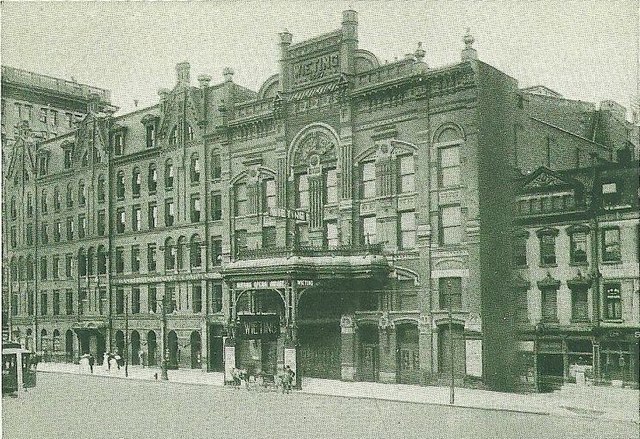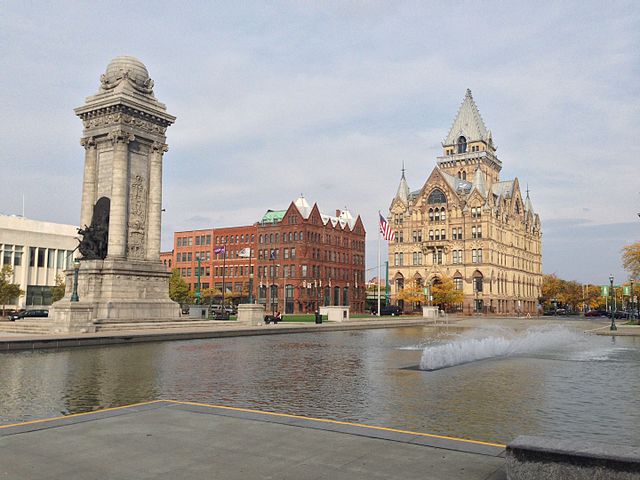The Wieting Opera House was a performance hall in Syracuse, New York, that hosted operas, films, and other performances from 1852 to 1930. Initially built by John Wieting in 1852 as Wieting Hall, the building burnt down in 1856. He rebuilt it that year, and in 1870 renovated the hall into an opera house. Towards the end of the 19th century, the opera house was a major theater in the Eastern United States, and held test performances of shows that were bound for performance on Broadway in New York City. The opera house burnt down in 1881 and 1896, and was rebuilt both times, the second time by Wieting's wife, Mary Elizabeth Wieting. The opera house began showing movies in the early 20th century, and closed in 1930, when it was replaced with a parking garage.
The Wieting Opera House c. 1905
Wieting Block and Wieting Opera House in Clinton Square in Syracuse, New York 1913 from Erie Canal bridge
Ruins of the Opera House after the 1881 fire
Wieting Opera House interior, 1878
Clinton Square is an intersection in downtown Syracuse, New York, United States. The square was the original town center and first came into existence in the early 19th century where roadways from north and south convened. With the opening of the Erie Canal in 1825 the intersection was further transformed. During the 19th century, the square was a marketplace that also hosted several public events, including an 1870 public barbecue reportedly attended by 20,000 people.
Clinton Square in 2013
Clinton Square next to the Erie Canal circa 1905: Syracuse Savings Bank on left, Gridley Building in center and Wieting Opera House on far right - The tall building (center on right) is the Onondaga County Savings Bank
Clinton Square, with an ice skating rink in the center, during the winter







